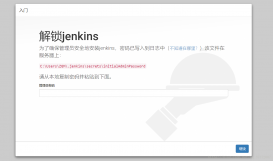Spring太复杂了,配置这个东西简直就是浪费生命。尤其在没有什么并发压力,随便搞一个RESTful服务,让整个业务跑起来先的情况下,更是么有必要纠结在一堆的XML配置上。显然这么想的人是很多的,于是就有了Spring Boot。又由于Java 8太墨迹于是有了Kotlin。
数据源使用MySql。通过Spring Boot这个基本不怎么配置的,不怎么微的微框架的Spring Data JPA和Hibernate来访问数据。
处理依赖
这里使用Gradle来处理依赖。
首先下载官网给的初始项目:
|
1
|
git clone https://github.com/spring-guides/gs-accessing-data-jpa.git |
然后跳转到gs-accessing-data-jpa/initial目录下。
用IntelliJ IDEA打开这个项目,选择使用Gradle管理依赖。
之后Gradle会自动下载依赖项。这会花一点时间。你可以去和妹子聊一会儿了。。
如果你觉得这样很麻烦的话,可以建立一个Gradle项目。之后根据上面的例子建立一个目录:
|
1
2
3
4
|
└── src └── main └── java └── hello |
但是无论是用上面的哪种方式,最后都需要在Gradle文件中添加依赖项。这个Gradle文件是build.gradle。添加完依赖项
之后是这样的:
|
1
2
3
4
5
6
7
8
9
10
11
12
13
14
15
16
17
18
19
20
21
22
23
24
25
26
27
28
29
30
31
32
33
34
35
36
37
38
39
40
41
42
43
44
45
46
|
buildscript { repositories { mavenCentral() } dependencies { classpath("org.springframework.boot:spring-boot-gradle-plugin:1.3.3.RELEASE") }}apply plugin: 'java'apply plugin: 'eclipse'apply plugin: 'idea'apply plugin: 'spring-boot'jar { baseName = 'gs-spring-boot' version = '0.1.0'}repositories { mavenCentral()}sourceCompatibility = 1.8targetCompatibility = 1.8dependencies { // tag::jetty[] compile("org.springframework.boot:spring-boot-starter-web") { exclude module: "spring-boot-starter-tomcat" } compile("org.springframework.boot:spring-boot-starter-jetty") // end::jetty[] // tag::actuator[] compile("org.springframework.boot:spring-boot-starter-actuator") // end::actuator[] compile('org.springframework.boot:spring-boot-starter-data-jpa:1.3.3.RELEASE') compile('mysql:mysql-connector-java:5.1.13') testCompile("junit:junit")}task wrapper(type: Wrapper) { gradleVersion = '2.3'} |
配置文件
在目录src/main/resources/application.properties下编辑配置文件。默认是没有这个文件和相应的目录的,自行创建。
|
1
2
3
4
5
6
7
8
9
10
11
12
13
14
15
16
17
18
19
20
21
22
23
24
25
26
|
spring.datasource.url = jdbc:mysql://localhost:3306/testspring.datasource.username = rootspring.datasource.password = root#spring.datasource.driverClassName = com.mysql.jdbc.Driver# Specify the DBMSspring.jpa.database = MYSQL# Keep the connection alive if idle for a long time (needed in production)spring.datasource.testWhileIdle = truespring.datasource.validationQuery = SELECT 1# Show or not log for each sql queryspring.jpa.show-sql = true# Hibernate ddl auto (create, create-drop, update)spring.jpa.hibernate.ddl-auto = update# Naming strategyspring.jpa.hibernate.naming-strategy = org.hibernate.cfg.ImprovedNamingStrategy# Use spring.jpa.properties.* for Hibernate native properties (the prefix is# stripped before adding them to the entity manager)# The SQL dialect makes Hibernate generate better SQL for the chosen databasespring.jpa.properties.hibernate.dialect = org.hibernate.dialect.MySQL5Dialect |
无需java的配置类,或者什么XML配置文件。
使用配置项hibernate.ddl-auto = true,项目所需的数据库和相关表、列会自动根据定义的实体类创建。点击这里,查看更多配置的说明。
创建一个简单地实体类
这里定义一个简单地实体类,并声明为JPA实体。这个类的文件存放在目录src\main\java\hello\Entities\下。
|
1
2
3
4
5
6
7
8
9
10
11
12
13
14
15
16
17
18
|
package hello.Entitiesimport javax.validation.constraints.NotNullimport java.io.Serializable;import javax.persistence.*;/** * Created by Bruce on 2016/3/9. */@Entity@Table(name = "user")data class User(@Id @GeneratedValue(strategy = GenerationType.AUTO) var id: Long? = 0, @Column(nullable = false) var name: String? = null, @Column(nullable = false) var email: String? = null) : Serializable { protected constructor() : this(id = null, name = null, email = null) { }} |
这里使用了Kotlin里的data class。data class最大的优点就是省去了定义getter和setter,以及toString()的时间。这些都已经默认实现。所以,在使用data class的对象的时候直接可以使用name、email当然还有id这样的属性直接访问。
无参数的构造函数是给JPA用的,所以访问级别设定为protected。主构造函数是用来创建和数据库操作相关的对象的。
整个的整个类被@Entity修饰,说明整个类是一个JPA的实体类。@Table声明用来表明整个类对应的数据库表是哪一个。
@Id修饰的User的属性id,会被JPA认为的对象的ID。同时@GeneratedValue(strategy = GenerationType.AUTO)
的修饰说明这个ID是自动生成的。
另外的两个属性name和email被@Column(nullable = false)修饰。说明两个列都是不可以为空的,同时说明两个列的名字和属性的名字是相同的。如果不同可以这样@Column(nullable = false, name="XXXXXX")。
创建简单地查询,或者说Dao类
这个就更加的简单了。JPA会自动在运行时创建数据库需要的增删改查的实现。这个实现可以是根据我们给出的Repository
来实现的。
根据User类,我们来实现一个UserDao(Repository):
|
1
2
3
4
5
6
7
8
9
|
package hello.Entitiesimport org.springframework.data.repository.CrudRepositoryimport org.springframework.transaction.annotation.Transactional@Transactionalinterface UserDao : CrudRepository<User, Long> { fun findByEmail(email: String): User?} |
泛型的类型参数分别是user和user的id的类型:User, Long。我们可以定义增删改查之外的Query。比如在上面的代码里我们定义了一个findByEmail()方法。具体的自定义查询时的命名规则可以查看这里。
用Controller测试一下
数据库,Rest服务和书库的连接都已经搞定。那么,我们就来测试一下。
我们在目录src\main\java\hello\Controllers创建一个UserController类来测试和数据库的数据存取。
|
1
2
3
4
5
6
7
8
9
10
11
12
13
14
15
16
17
18
19
20
21
22
23
24
25
26
27
28
29
30
31
32
33
34
35
36
37
38
39
40
41
42
43
44
45
46
47
48
49
50
51
52
53
54
55
56
57
58
59
60
61
62
63
64
65
66
67
68
69
70
71
72
73
74
75
|
package hello.Controllersimport hello.Entities.Userimport hello.Entities.UserDaoimport org.springframework.beans.factory.annotation.Autowiredimport org.springframework.web.bind.annotation.RestControllerimport org.springframework.web.bind.annotation.RequestMappingimport org.springframework.web.bind.annotation.ResponseBody/** * Created by Bruce on 2016/3/9. */@RestControllerclass UserController { @Autowired private var userDao: UserDao? = null @RequestMapping("/create") @ResponseBody public fun create(name: String, email: String): User? { try { var newUser = User(name = name, email = email) userDao?.save(newUser) return newUser } catch(e: Exception) { return null } } @RequestMapping("/delete") @ResponseBody public fun delete(id: Long): String { try { var user = User(id) userDao?.delete(user) return id.toString() + "deleted" } catch(e: Exception) { return "delete error " + e.message.toString() } } @RequestMapping("/get-by-email") @ResponseBody public fun getByEmail(email: String): User? { try { var user = userDao?.findByEmail(email) if (user != null) { return user } else { return null } } catch(e: Exception) { return null } } @RequestMapping("/update") @ResponseBody public fun updateUser(id: Long, name: String, email: String): User? { try { var user: User? = userDao?.findOne(id) ?: return null user?.name = name user?.email = email userDao?.save(user) return user } catch(e: Exception) { return null } }} |
测试URL可以是这样的:
- /create?name=Jack&email=hello@234.com,使用指定的用户名和邮箱在数据库里生成一个新的user,id是自动生成的。
- /delete?id=3, 删除id值为3的user。
- /get-by-email?email=hello@234.com,注意Controller用到的UserDao.findByEmail()只返回一个user,所以如果有多个 返回值的话会报错。
- /update?id=1&email=what@123.com&name=Bruce,更新id为1的user。
以上就是本文的全部内容,希望对大家的学习有所帮助,也希望大家多多支持服务器之家。
原文链接:http://www.cnblogs.com/sunshine-anycall/p/5263511.html















